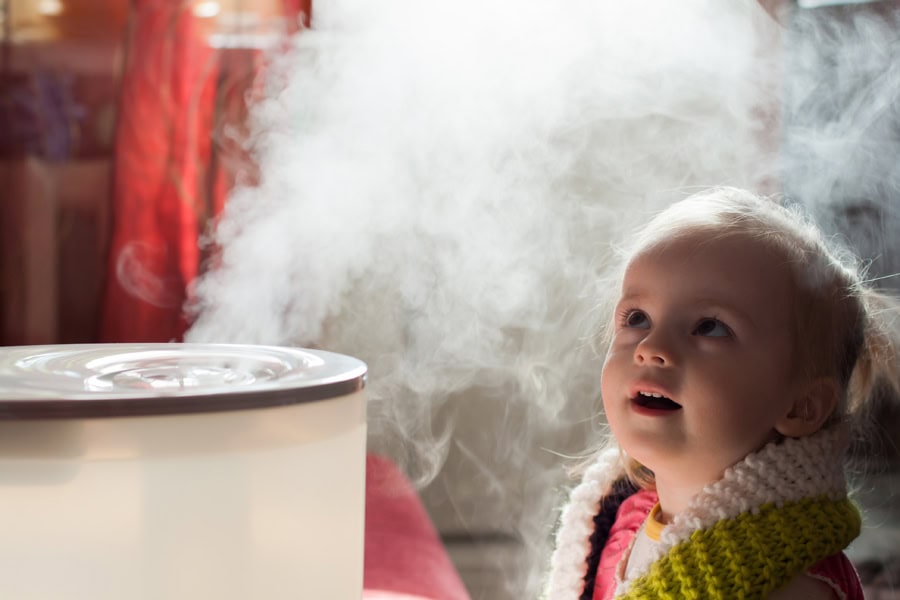Why You Should Invest in a UV Air Purifier

A typical indoor evaporator coil has 20 million to 40 billion microbes (bacteria/fungi/mold) living on it! A UV Air purifier reduces those numbers by 99.9%–99.999%!*
Is Your Evaporator Coil Safe?
The number of microbes living on a moderately dirty indoor evaporator coil in a typical home HVAC system can vary widely based on factors like humidity, dust accumulation, and maintenance history.
However, estimates based on studies of HVAC contamination suggest the following:
- Bacteria: 10⁴ to 10⁷ CFU (colony-forming units) per square centimeter
- Fungi/Mold Spores: 10² to 10⁵ CFU per square centimeter
Given that a typical residential evaporator coil has a surface area of 2 to 5 square feet (about 1,800 to 4,500 cm²), the total microbial count on a moderately dirty coil could range from tens of millions to several billion microbes.
Breakdown of a Rough Estimate:
- Low-end estimate: (104CFU/cm2)×(2000cm2)=2×107 (20 million microbes)
- High-end estimate: (107CFU/cm2)×(4000cm2)=4×1010 (40 billion microbes)
Factors Affecting Microbial Growth on Evaporator Coils
- Moisture levels: Evaporator coils naturally condense water, providing a breeding ground for bacteria and mold.
- Dust and organic debris: These provide nutrients for microbial growth.
- Airflow and temperature: Warm, stagnant conditions encourage growth, while colder and drier conditions inhibit it.
- Maintenance and cleaning: Regular coil cleaning and UV lights can significantly reduce microbial buildup.
How a UV Air Purifier Can Help
If a UV air purifier shines on an evaporator coil for one week, the microbial load would be significantly reduced but not necessarily eliminated. The effectiveness of UV sterilization depends on factors like UV-C intensity, exposure time, coil surface area, and microbial resistance.
Estimated Reduction in Microbial Count on Evaporator Coil
- Depending on exposure, UV-C light can reduce bacteria and mold by 90%–99.9% over time.
- Studies suggest that 24-48 hours of continuous UV exposure can reduce microbial levels by 1 to 3 log reductions (90%–99.9%).
- After a week, assuming effective UV exposure, microbial populations could be reduced by 3 to 5 log reductions (99.9%–99.999%).
Additional Microbial Mitigation Strategies
- Regular coil cleaning: Using an EPA-approved coil cleaner or hydrogen peroxide-based solution can help control microbial buildup.
- Proper humidity control: Keeping indoor humidity below 50% helps prevent mold and bacterial proliferation.
- HVAC maintenance: Changing air filters regularly and ensuring proper airflow reduces contaminants.
Risk of Not Cleaning Your Evaporator Coil
Leaving microbes on the evaporator coil can lead to indoor air quality issues and potential health risks, especially if the HVAC system circulates contaminated air throughout the home.
Here’s a breakdown of the potential risks:
1. Respiratory Issues
- Mold spores, bacteria, and biofilm buildup can become aerosolized and circulate in the air, irritating the respiratory tract.
- People with asthma or allergies are particularly sensitive to airborne contaminants.
- Some bacteria, like Legionella, can cause Legionnaires’ disease, though this is more common in large-scale HVAC systems.
2. Increased Allergy and Asthma Symptoms
- Mold and bacterial fragments can trigger sneezing, coughing, wheezing, and sinus congestion.
- Dust mites and microbial debris act as allergens, exacerbating respiratory conditions.
3. Sick Building Syndrome (SBS)
- Prolonged exposure to microbial growth on HVAC components has been linked to SBS, a condition where people experience headaches, fatigue, nausea, and eye/throat irritation from poor indoor air quality.
4. Odors and Air Quality Decline
- Microbial growth often leads to a musty, mildew-like odor coming from the vents, indicating mold or bacterial colonies.
- VOCs (volatile organic compounds) released by microbes can create unpleasant or even toxic odors.
5. Potential for Opportunistic Infections
- Immunocompromised individuals may be at higher risk of infection from Pseudomonas, Aspergillus, or other opportunistic pathogens.
- Fungal infections, though rare in healthy individuals, can become a concern in homes with excessive mold growth.
At-Risk Communities Who Benefit From UV and HVAC Maintenance
Certain groups of people are more vulnerable to the health risks associated with microbial contamination on an evaporator coil due to their weaker immune systems, preexisting conditions, or sensitivity to allergens.
1. People With Respiratory Conditions
- Asthma sufferers: Mold spores, bacteria, and dust can trigger asthma attacks.
- Allergy sufferers: Mold, bacteria, and microbial debris can worsen symptoms like sneezing, congestion, and itchy eyes.
- Chronic Obstructive Pulmonary Disease (COPD) patients: Poor air quality can cause flare-ups and difficulty breathing.
2. Immunocompromised Individuals
- Elderly individuals: Aging immune systems are less effective at fighting off airborne bacteria or fungi infections.
- People undergoing chemotherapy: Their immune system is weakened, making them more vulnerable to opportunistic infections.
- Organ transplant recipients: Anti-rejection medications suppress the immune system, increasing infection risk.
- Individuals with autoimmune diseases (e.g., lupus, rheumatoid arthritis): Some treatments suppress the immune response.
3. Infants and Young Children
- Developing immune systems makes them more susceptible to respiratory infections and allergic reactions.
- Exposure to mold or bacteria early in life may increase the risk of developing asthma or allergies.
4. People With Chronic Health Conditions
- Diabetics: Higher susceptibility to infections due to blood sugar-related immune suppression.
- Heart disease patients: Poor air quality can strain the cardiovascular system.
5. Those Frequently Exposed to the HVAC System
- Homeowners spending a lot of time indoors: More prolonged exposure to contaminated air.
- Office workers in buildings with poor ventilation: Sick Building Syndrome can cause fatigue, headaches, and respiratory symptoms.
If you or a family member falls into one (or more) of these categories, consider UV-C purification, regular HVAC maintenance, and humidity control to minimize risks.
Contact Shavitz Heating and Air Conditioning at 847-861-5559 or request service online to discuss ways to maintain the health and safety of your HVAC system.

